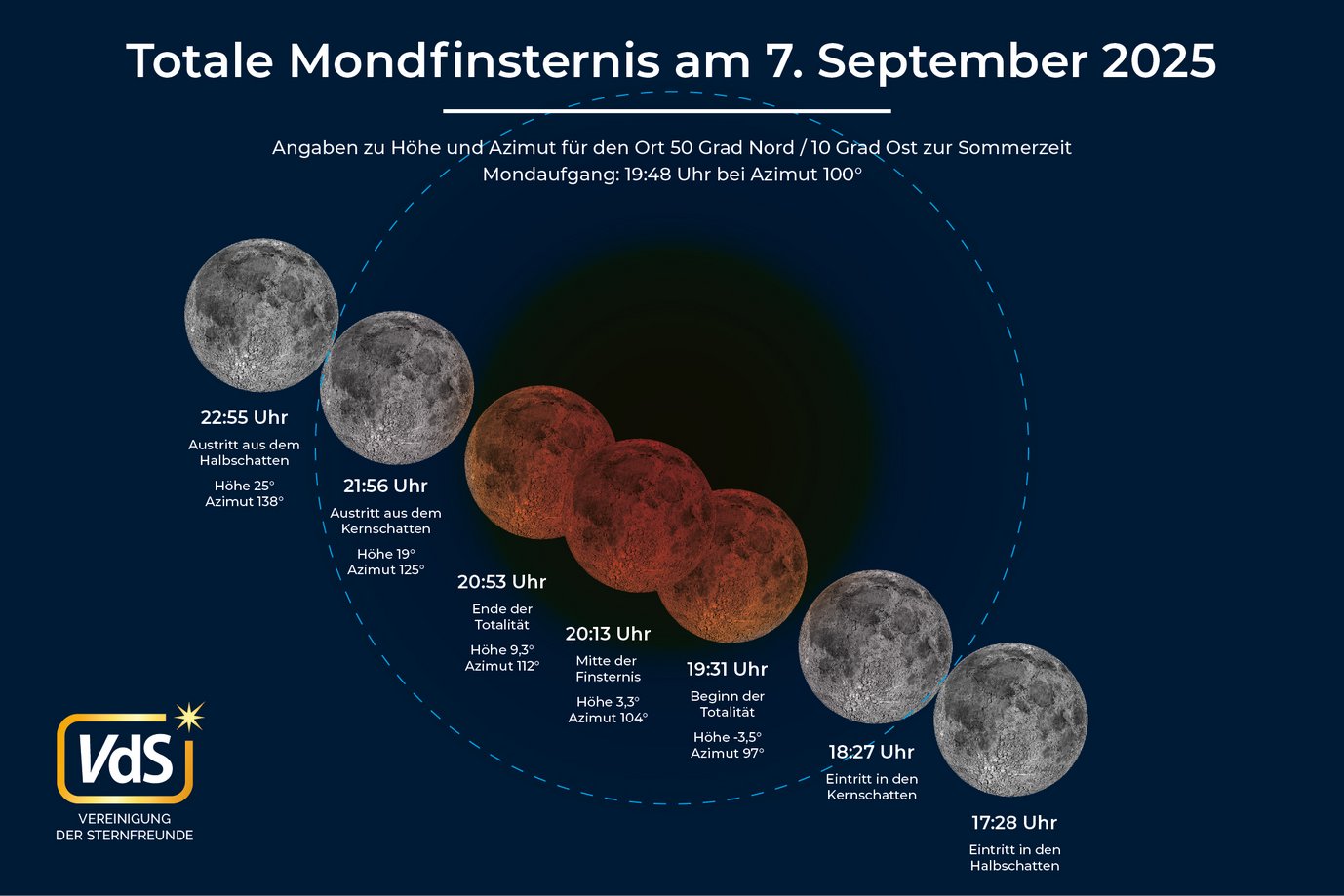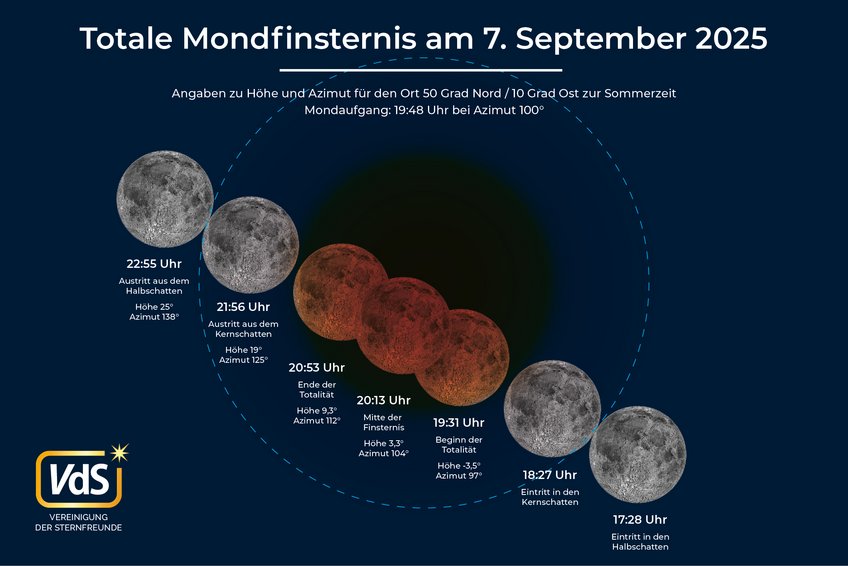Total lunar eclipse on 7 September 2025
On Sunday, 7 September 2025, a total lunar eclipse will take place in the evening hours of Europe and can be observed for the most part from the German-speaking countries. The Moon will already be eclipsed when it rises. Totality and the subsequent partial phase can be observed as dusk progresses, as soon as the Moon emerges from the haze above the horizon.
At 18:27 CEST on 7 September 2025, the Moon will enter Earth's umbra, marking the beginning of a total lunar eclipse. However, the Sun will still be above the horizon for all the German-speaking countries and the full Moon will not yet have risen at this time, similar to the total lunar eclipse on 27 July 2018. We will therefore miss the partial phase at the beginning of the eclipse, during which only part of the Moon is darkened. At 19:31 CEST, totality begins, during which the Moon is fully eclipsed. At this point, however, the moon has only risen in parts of Austria and in the far east of Germany near Görlitz. For most of Germany and Switzerland, the eclipse will only be visible after totality has begun, with observers having to wait longer the further west they are located.
In Heidelberg, the Moon will not rise until 19:52 CEST, but this nominal value refers to a flat horizon in the east-southeast. In reality, not only houses and trees but also the slopes of the Odenwald hills will block the view of the Moon from the city. In addition, due to its reduced brightness, the eclipsed Moon will probably only be visible with binoculars or telescopes immediately above the horizon in the bright twilight sky. However, by the end of totality at 20:53 CEST, it has had enough time to rise higher above the horizon and emerge from the haze visible to the naked eye. From then on, it will be possible to capture the reddish Moon with an attractive foreground motif on camera. A cell phone camera can do the job, but as dusk progresses, longer exposure times will be necessary.

It will strongly depend on local conditions and the time of observation how dark the Moon will appear during this eclipse and what color it will have. In addition to global effects, such as particles from volcanic eruptions or Saharan dust in Earth's atmosphere, dust stirred up by agricultural activities and pollutants from industrial and automotive emissions in the air influence the transmission of the atmosphere near the horizon. Possible colors include dark gray, brown, copper, and deep red.
After the end of totality at 21:56 CEST, you can then follow the partial phase at the end of the eclipse, when the moon leaves the Earth's umbra again as darkness increases – assuming, of course, that the sky is clear.
Unfortunately, as the view from Heidelberg Königstuhl towards the rising Moon is severely restricted by trees, Haus der Astronomie will not offer on-site observation of the eclipse. We recommend looking for a location with a clear view of the horizon in the Rhine Valley west of Heidelberg to observe the eclipse.
Lunar eclipse enthusiasts will then have to wait a while, as the next total lunar eclipse on 6 March 2026 will unfortunately not be visible from Europe. The next total lunar eclipse that will be clearly visible from German-speaking countries will not take place until the eve of the new year 2028/29, in the evening hours of 31 December 2028. After that, ttal lunar eclipses come in quick succession: on 26 June 2029 and on 20/21 December 2029.
